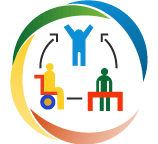Tips for Nursing Students: The Successful Interview
The National League for Nursing and the National Students Nurses’ Association (NSNA)(2012) stated that “although there is a shortage of registered nurses, the economic recession has flooded the RN market with experienced nurses who were retired, planning to retire, or went from part-time to full-time employment. The need for RNs has declined due to low hospital census”. Nursing students graduating today face a competitive employment market. Much of your success at getting the position you want will depend on how well you interview for the job. Follow these steps to be better prepared and increase your chances for a successful interview.
Be prepared
Submit your resume and application in advance, but do not assume that the person interviewing you has read them carefully. Before the interview, think about how you can highlight important aspects of your experience or education. Do some background research on the organization or place to which you are applying.
Familiarize yourself with the key people in authority, especially focusing on the person who will interview you. During the interview you can use this information to establish some common ground. Consider some key areas such as: How large is the organization and/or the unit where you are applying? What population and geographic area do they serve? What expertise do you have to offer that might be valuable to them? For example, if you are applying for a job on an inpatient rehabilitation unit, did you have a course in rehabilitation or do clinical rotations in rehab? If so, be sure to mention this during the interview.
Look professional
Paul Walden, writing on the NSNA website, stated, “appearance and attitude are everything. Dress in professional attire and smile. Make sure you arrive promptly”. Although professional attire may be more casual than it has been in years past, employers still expect an interviewee to look his/her best. This means no blue jeans, shorts, cut-offs, flip-flops, low-cut blouses, miniskirts, overbearing jewelry, or other extremes in attire. Business casual is usually acceptable, but when in doubt, err on the side of dressing more formally in business attire than casual.
Start with a good beginning
Introduce yourself and offer to shake hands with the interviewer while making direct eye contact. Do not sit down until directed to do so. The interviewer controls the interview. Express enthusiasm for the interviewer taking time to speak with you and make a positive comment about the surroundings or reputation of the facility. Smile and convey friendliness, approachability, and confidence. Most nurse managers are looking for a “good fit” in a new employee with their existing staff and unit milieu. Your personality may be as important to the manager as your skill set. Listen for comments made by the interviewer that suggest he/she is seeking someone who will be a team player and then be sure to share ways in which you have successfully blended with similar groups in the past.
Ask thoughtful questions
Have a few thoughtful questions ready to ask. For example: How does the open position fit within the organizational chart? Is there opportunity for gaining additional education? What type of orientation or mentoring do they provide for new nurses? Are there opportunities for advancement? These types of questions show that you are interested in a long-term relationship with the organization and are willing to learn and increase your professional skills. Asking deliberate questions can also help you assess whether or not this job is the right one for you.
Be memorable
You want the person conducting the interview to remember you in a positive light. What sets you apart from others who might be applying for this job? Answering that question in advance will point you in the direction where you need to shine. This might be your engaging personality, strong evaluations from clinical professors, your flexibility or willingness to learn, your experience in another country with service-learning projects, or your good academic performance.
End the interview well
If you were fortunate enough to be given a tour of the unit or facility, be sure to take advantage of any opportunities to greet or interact with staff or patients. The interviewer may be watching to see if you display positive interpersonal skills. Before you leave the interview, be sure that you know how you will be notified if they wish to hire you. Thank the interviewer and shake hands again (if appropriate), expressing your enthusiasm for this wonderful opportunity. If possible, send a follow-up email or thank you note to the interviewer for his/her time and attention. Be sure to continue to display warmth and cordiality as you leave the facility. You never know who may be watching.
Guest Blog:The Best Anti-Aging Skincare Routine for Seniors
 Everyone wants to look young forever, but it’s not always possible. After all, time can be cruel. But, you don’t have to spend your days feeling old and decrepit. There are a few things that you can do to fight the signs of aging on your skin while avoiding surgery or other invasive treatments. Here are some of the best anti-aging skincare routines for seniors:
Everyone wants to look young forever, but it’s not always possible. After all, time can be cruel. But, you don’t have to spend your days feeling old and decrepit. There are a few things that you can do to fight the signs of aging on your skin while avoiding surgery or other invasive treatments. Here are some of the best anti-aging skincare routines for seniors:
Moisturize
You should use a moisturizer every day so that your skin doesn’t become dry and cracked. Look for products with sunscreen protection if you live in an area where sunlight is abundant.
Exfoliate
It’s important to exfoliate regularly so that new cells will grow. Exfoliating can also help you to get rid of dead skin cells, which makes your complexion look more vibrant and healthy. That’s why you should moisturize every day so that your skin doesn’t become dry and cracked.
Avoid the sun
If possible, avoid spending time in direct sunlight for extended periods. Because it’s damaging to your skin unless you’re wearing sunscreen with a high level of protection. Finally, be sure that you wear sunglasses when outside so that ultraviolet light doesn’t do any damage on its own.
Exercise regularly
It’s important for everyone over 50 years old to exercise. Make it at least six times per week to stay fit and maintain their weight (or lose extra pounds). The best part is that exercising has a lot of benefits for your skin, so it’s good for more than your body.
Avoid smoking
Smoking not only causes lung cancer but also leads to premature aging. If you have trouble quitting the habit, consider seeing a doctor about some programs that can help. Try adding anti-aging products into your routine until you’re able to break this nasty addiction.
Eat healthy food and drink plenty of water to keep yourself from becoming ill or dehydrated. This is especially important if you live with other people who might be sick because they’ll make you sick too. It will protect them as well since most germs are spread by close contact with someone else who has them already anyway. You don’t want to spend your golden years sick, do you?
Avoid stress
This is another major skincare issue for seniors. If you want a clear complexion and fewer wrinkles around the eyes or mouth, try not to let yourself get too stressed out about anything. Stress leads to lots of different skin problems including acne breakouts and psoriasis flare-ups. Don’t sweat it if something goes wrong because there’s always tomorrow. It will make a huge difference in how you look. You’ll feel better as well from all that relaxation time. This means that everyone wins when you don’t worry too much about things outside of your control. Remember: life happens but it doesn’t have to happen to you.
Use of serums
These are fantastic all-natural anti-aging skincare products. This is where all the magic happens from a skincare standpoint. There’s been tons of research done on this all-natural ingredient. Which has been shown time and time again to be effective for brightening up sun-damaged skin. Then protecting against future UV damage by neutralizing free radicals in the body before they even have a chance to do any harm.
You can also use a fantastic all-natural antioxidant serum that will protect your skin from free radical damage. Also other harmful environmental toxins like smog and cigarette smoke. These all natural products should be applied every morning right after you wash your face. This will give your skin all day protection against UV exposure as well as pollution.
Closing Thoughts
Maintaining a good skincare routine can be very helpful for seniors because it helps to keep them looking young. You don’t need surgery or invasive treatments if you’re willing to try some simple things out first. Take care of yourself and your skin will reward you with a youthful appearance that won’t age as quickly as the rest of your body. Don’t neglect these tips for anti-aging skincare routines unless you want everyone seeing right through how old you are. These tips will help anyone over 50 years old who wants to look younger. Without having any dangerous side effects from traditional surgical methods.
Guest Post: Keeping Seniors Safe at Home
While there’s no 100% absolute way to ensure your elderly parent or loved one doesn’t fall,
there are things that can be done to help minimize the risk. I’ll give you a quick checklist of
five steps to a safer home for a senior. Likewise, click here for some alternative ways to
steer clear of falls.
1. Furniture, accessories, and narrow pathways:
Is there furniture crowding a room or creating narrow pathways? Are there inessential
items or decorations all over the house? None of us like to throw things away and we all
know seniors love to keep antiques and knick-knacks, but sometimes they can pose a
hazard to elderly home safety. That old rug underneath the coffee table can trip you easier
than you think. Make sure there is nothing impeding easy travel throughout the house. A
straight path is the easiest path so there should be no navigating around corners or edges.
2. Doorsills and steps:
Now, these two sound like obvious culprits, but you’d be surprised how often they’re
underestimated. A quick remedy is to paint doorsills a different color or buy reflective tape
for the edge as a reminder that they’re there. This goes for the edge of stairs as well.
Confirm that there’s no loose carpeting, unstable wood, or erosion of any kind on steps or
doorsills. Also, make sure any area with a step or uneven surface is very well lit.
3. Lighting:
This one is perhaps the easiest of all. Double-check that all areas of the house are well lit,
with bulbs at least 60 watts or higher in each socket. Remove all exposed cords and make
sure any lamp or light-switch is within easy reach. If the lamp closest to a favorite reading
chair is hard to reach while sitting, move it closer. Also, check that there is no risk of any
lamp falling or being tripped over. Again, lamps should remain within reach, but still out of
the way.
4. Telephones:
Keep a telephone, within easy reach, in each room. This prevents your elderly loved one
from feeling compelled to rush to a ringing phone. Not only can getting up too quickly cause
light-headedness or dizziness, but it can also cause an elderly person to lose focus on their
surroundings and mistakenly fall in an easily preventable situation.
5. Bathrooms:
Bathroom floors and shower tubs can get slippery, we know this. To combat slipping,
guarantee there are either bars affixed to the wall or a counter to grip while getting up and
down off the toilet and in and out of the shower. Also, purchase adhesive grip-tape for the
tub bottom and again, provide adequate lighting throughout the bathroom. Shower rugs
can also slip so place double-sided tape on the bottom of the rug to impede the rug’s
movement.
If you are worried about a loved one, these are very easy and painless steps to minimize the
risk of in-home falls. As mentioned before, however, there is no 100% way to prevent accidents so medical alert systems provide a great backup. Not only do they give you peace
of mind when you’re not around your loved one, but they make the wearer feel safe as well.
Jacob Edward is the manager of Senior Planning in Phoenix Arizona. Senior Planning is geared towards helping
seniors and the disabled with finding and arranging types of care, as well as applying for state and federal
benefits.
Global Certification: A Transformative Approach to Building the World’s Rehabilitation Health Workforce
Global Certification: A Transformative Approach to Building the
World’s Rehabilitation Health Workforce
Click on this link to access the free article
Julia To Dutka(1)*, Mark Kovic(2), Kristen Mauk(3), Richard E. Oliver(4)
(1)CGFNS International, Inc., Pennsylvania, USA (2)Midwestern University, Illinois, USA (3)Colorado Christian University, Colorado, USA
(4)University of Missouri, Columbia, Missouri, US



